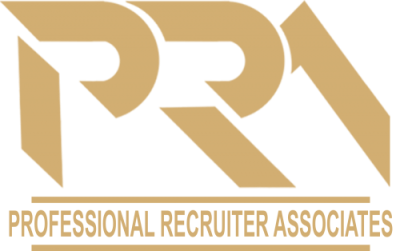Don’t Rush In Without a Plan – Returning to Work in the Time of COVID-19

As Labor Day approaches, with schools reopening (in some form or fashion), and as we approach the end of our collective bandwidth for Zoom meetings, much time and attention has been spent discussing how and when to finally “return to work.”
But in thinking about that seemingly innocuous phrase – “return to work” – employers would be remiss not to take a moment to pause and re-think what that phrase actually means in a post-COVID-world. Is work somewhere that you go? Or is work something that you do? Or is it some combination in the new normal? What is the right answer for your organization?
To Rush In or Not Rush In? That Is the Question.
The answer is – no one knows. Not Big Tech. Not Jerry Seinfeld. Even when we look toward the usual suspects and industry innovators for guidance and inspiration, we are met by cognitive dissonance. Google, for example, is allowing employees to work remotely until the summer of 2021, while concurrently expanding their physical footprint via the “Google Pier” on the Far West Side of Manhattan. Compare that with Twitter’s approach of allowing employees to work remotely, indefinitely – or said more directly, forever. And then we have Facebook, which has extended its work from home policy until 2021, but which just inked a deal for 700,000 square feet of commercial real estate across from Penn Station in the old Post Office Building.
With real estate costs often in the top three line items of any business, organizations should take this opportunity to revisit their real estate model as it relates to their human capital model. Examine as a case study the pros and cons of remote working over the last several months. What has worked well? What has been gained, whether it be productivity, leveraging technology, work-life balance or decreased operating expenses, and which of those gains will be incorporated into the new operating model. What has been lost – in terms of engagement, creative collisions, or culture, and how does an organization regain those virtues?
And it is easy to suffer from FOMO (Fear of Missing Out, first coined by author and entrepreneur Patrick McGinnis), particularly as reports of “back to work” abound across industries and geographies, and particularly as the labor market continues to suffer. But we would implore all businesses to take a collective deep breath – and for a brief moment – examine for themselves what the right mix is for their organization. Consider polling not just the C-suite, but as many clients are doing, also polling the workforce more broadly to take the collective temperature (really, particularly now, no pun intended) of the employee population as to what they want in terms of a return to work model. Many clients, particularly in professional services, report that they are moving towards a more flexible, agile, hybrid model – permanently, akin to the model recently announced by JPMorgan. Of course, that same model might not be right for retail or production-based organizations. It might not be the same answer for a company with an HQ in New York, versus Texas, versus California. You get the idea.
So before even considering “how” to get back to the office – and before getting swept up in the momentum of returning – take a moment to do a bit of organizational (and real estate) soul searching.
When (and If) Returning, Have a Plan.
If, like the majority of companies, you are planning on returning to a physical workplace at some point and in some capacity – have a plan. Develop a plan that follows both state and local requirements, and keeps in mind regulatory recommendations, to maintain a safe workplace for all employees amid the COVID-19 pandemic.
Return to work plans are not only essential for maintaining the health and safety of all employees, but may also be required by the state or locality in which the business operates before opening back up.
For example, in New York, employers must create and conspicuously post completed safety plans on site. Employers may use the New York State template or may develop its own safety plan outlining how to prevent the spread of COVID-19 in the workplace. Further, New York employers are required to train employees on how to use, clean, and discard personal protective equipment, including face coverings.
California, by way of further example, has provided specific requirements for both safety plans and employee training, as employees venture back to the physical office, including use of face coverings, frequent handwashing and regular disinfection, and physical distancing, where possible.
With respect to training, many states require or, at a minimum, suggest that employers provide employees with information on the following:
- policies to reduce the spread of COVID-19;
- general hygiene;
- self-screening at home, including temperature and symptom checks;
- symptoms of COVID-19 and what to do if an employee or visitors becomes sick;
- cleaning and disinfection of the workplace;
- use and disposal of face covers; and
- social distancing.
Even if not a requirement, it is certainly best practice to follow and regularly review the ever evolving guidance from the Center of Disease Control (“CDC”) and the Occupational Safety and Health Administration (“OSHA”), in order to properly prepare the workplace as employees return. According to OSHA, when creating a workplace safety plan, employers should consider where, how, and to what sources of COVID-19 might employees be exposed and employees’ individual risk factors, such as presence of a chronic medical condition. In addition, development of policies and procedures will ensure prompt identification and isolation of employees, should they become sick. Moreover, the CDC states that employers should consider conducting daily in-person or virtual health checks of employees prior to entrance to the building or office. Creating and implementing a plan for what employees should expect prior to entering the office, as well as what to expect once physically back in the office, will ensure that everyone has a set game plan upon arrival.
The needs of each workplace will vary and workplace safety plans and training are not one-size fits all. Thus, employers should review state and local guidance for applicable requirements and review their workplace policies and procedures to ensure that everyone understands the workplace safety plan and to ensure compliance.
What Do We Do Now?
Taken together, our best advice – practically and existentially: don’t rush in – not without a plan, at least.
This article was originally published in The National Law Review by Ian Carleton Schaefer
https://www.natlawreview.com/article/rule-1-don-t-rush-without-plan-return-to-work-time-covid-19

Professional Recruiter Associates